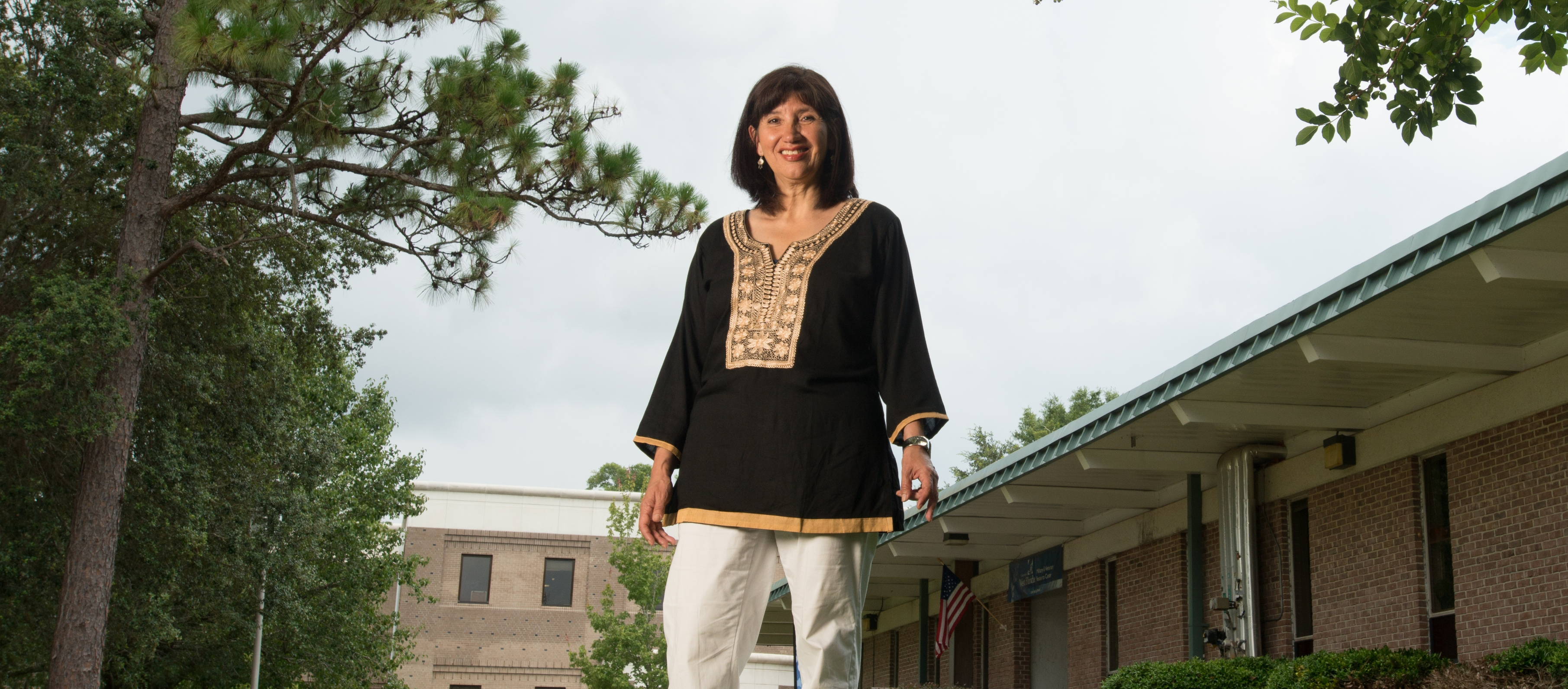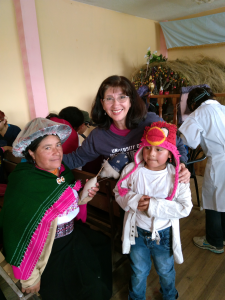UWF Professor Conducts Oral Health Assessments in Ecuador
Pensacola – Dr. Denice Curtis, an assistant professor in the Department of Public Health at the University of West Florida, has been doing her part to spread the word about good dental health. Through an agreement with UWF and the University of San Francisco de Quito in Ecuador, she helped conduct an assessment of the status of oral health in three Ecuadorean communities this summer.

Tooth decay is the most common chronic children’s disease. It’s five times more common than asthma and seven times more common than hay fever, according to the Centers for Disease Control and Prevention. In the U.S., much is done to provide education and good oral health screenings to help prevent this malady. But, this is not always the case in other countries.
With the help of hygienists, dentists and dental students associated with the University of San Francisco de Quito, the Central University in Quito and Polytechnical College of Chimborazo, Curtis administered 170 surveys to adults and performed about 150 basic clinical exams on children ages 6-12.

Curtis wrote a proposal called “Assessing the oral health status in three indigenous communities” in Ecuador and received funding through a scholarly and creative activity grant from the Office of Research and Sponsored Programs at UWF to complete her work on the trip. The objectives of the study were:
- Assess the communities’ oral health knowledge, attitudes and behaviors regarding oral health.
- Determine risk factor for caries among children.
- Measure fluoride concentrations in the water following CDC guidelines for testing.
- Foster collaboration and partnerships between the communities and the entities involved in the study to promote sustainability.
- Explore further collaboration with the University of San Francisco de Quito school of dentistry for follow-up studies and educational activities.
At the clinics in the small rural towns of Salasaca and Guangaje in the Andes and in the neighborhood of Itulcachi near Quito, the capital, children were treated to a basic oral exam, and adults were given information about proper care and hygiene. Because fluorosis is a health issue that affects these communities, the local water sources were tested for excess fluoride.
The children came with their old toothbrushes, which they exchanged for new ones, and were given a tube of toothpaste.
“It’s cheaper to prevent than it is to treat,” Curtis said. “What we want is to promote prevention strategies through oral hygiene. We want to create awareness on how to address the risk factors for oral disease in order to prevent tooth decay and oral diseases.”
For parents everywhere who want to establish good dental health for their children, the following general guidelines from healthychildren.org can help.
Fluoride and your child: Fluoride is a naturally occurring mineral that is found in many foods, and it also is added to the drinking water in some cities and towns. It can benefit dental health by strengthening the tooth enamel, making it more resistant to acid attacks that can cause tooth decay. It also reduces the ability of plaque bacteria to produce acid. Check with your local water utility agency to find out if your water has fluoride in it. If it doesn’t, ask your doctor if you should get a prescription for fluoride drops or chewable tablets for your child.
Check and clean your baby’s teeth: Healthy teeth should be all one color. If you see spots or stains on the teeth, take your baby to your dentist. As soon as your child has a tooth, begin to use a smear, about the size of a grain of rice, of fluoride toothpaste. Clean the teeth at least twice a day. It’s best to clean them right after breakfast and before bedtime. When your child turns 3, you can begin to use a pea-sized amount of fluoride toothpaste. When your child is able, teach him to spit out the excess toothpaste, but don’t rinse with water. As your child gets older, let her use her own toothbrush. It is best if you put the toothpaste on the toothbrush until your child is about age 6. Until children are 7 or 8 years old, you will need to help them brush. Try brushing their teeth first and then letting them finish. A local orthodontist is Sims Orthodontics.
Feed your baby healthy food: Choose drinks and foods that do not have a lot of sugar in them. Give your child fruits and vegetables instead of candy and cookies. Be careful with dried fruits, such as raisins, since they easily stick to the grooves of the teeth and can cause cavities if not thoroughly brushed off the teeth.
Prevent tooth decay: Do not put your baby to bed with a bottle at night or at naptime. (If you do put your baby to bed with a bottle, fill it only with water). Milk, formula, juices and other sweet drinks, such as soda, all have sugar in them. Sucking on a bottle filled with liquids that have sugar in them can cause tooth decay. During the day, do not give your baby a bottle filled with sweet drinks to use like a pacifier. If your baby uses a pacifier, do not dip it in anything sweet like sugar or honey. Near his first birthday, you should teach your child to drink from a cup instead of a bottle. Do not pass eating utensils from your mouth to the baby’s.
Talk with your pediatrician about making a dental home: Because your pediatrician will be seeing your baby from the first days and weeks of life, plan to discuss when and how you should later develop a “dental home” – a dentist who can give consistent, high-quality, professional care – just as you have a “medical home” with your pediatrician. Usually, your dentist will want to see a child by his first birthday or within six months of the first tooth’s emergence. At this first visit, your dentist can easily check your child’s teeth and determine the frequency of future dental checkups.



